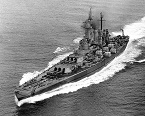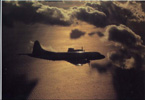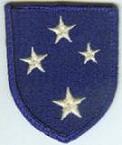ChezDaJez
Posts: 3436
Joined: 11/12/2004
From: Chehalis, WA
Status: offline

|
quote:
That is incorrect. 330 knots is roughly 379 mph. 1 knot is 1.15077945 miles. No variant of the A6M exceeded 343 mph typical (give or take a few mph either way) leve max airspeed.
My bad... the entire post should read mph not knots.
quote:
At speeds above 330 mph the the P-39 will both out-accelerate and out-turn a Zero. If the P-39 is at its maximum level flight speed of 375-385 mph it will open (or close) the distance with a maxxed out Zeke at a rate of about 60 feet per second. Most WW2 a2a kills occurred at ranges of roughly 100m, although some (not the Zero, the Zeros cannons were arguably the least ballistically accurate a2a cannons of the war). Assuming that the Zero was chewing the P-39's rudder with its prop, the P-39 would be out of range, irrespective of its superior roll and turn rates at that speed,
Neither the A6M2 or M3 could exceed 335mph so of course the P-39 could out-run and out-turn at speeds above that... that's kind of a commnon sense thing, don't you think? But no P-39 variant could out-accelerate either the Zero or the Oscar at any airspeed and altitude the Japanese fighters were capable of. And if the P-39 attempted any type of sustained turn, it lost speed so fast that it quickly became the prey. Anyone who thinks that aerial fights were all about top speed is sadly mistaken. A fighter may enter a fight at top speed but the moment it begins to maneuver, it will be unable to sustain anything approaching top speed. Only boom and zoom tactics allowed an aircraft to maintain anything near top speed. In a maximum dive from 5000ft to a pull out at 1000ft, the P-39 can reach a maximum speed of 390 mph. 30 seconds after leveling, its speed will drop to a maximum of 345 mph.
As far as the A6M2 cannon goes, it was not that it was inaccurate so much as that it was ballistically incompatible with the machine guns.
quote:
If the Zero is fortuitously behind the P-39 and both are at the same altitude and level attitude, and if the P-39 does not elect to rapidly out accelerate the Zero by diving out, the Zero will be out of maximum point blank range in about six seconds. Time enough to do the job. Of course, in the real world, was the P-39 aware of the Zero at all, the latter would not be chewing its rudder. Realistically speaking, with both a.c. in high energy situations, a Zero might have time for an accurate 1 to 2 second burst -- provided that the P-39 did not dive out or roll.
Even if the P-39 elects to dive out, the Zero will still have sufficient time to fire a good burst. Being very heavy, it will not change direction as fast as you believe. Assuming the P-39 is below about 260-270mph at the beginning of the dive, the Zero will stay with it through the first few seconds of the P-39's maneuver. The Zero still out-accelerates the P-39 in a dive until the P-39 exceeds the Zero's maximum dive speed of around 350+mph. So, realistically speaking, the P-39 will still be under-fire for several seconds.
Of course, the P-39 can begin to out-roll and out-turn the Zero once its controls start to become heavy at speeds over about 275mph. Only then will the P-39 begin to enjoy a period a superior maneuverability.
quote:
quote:
The A6M2 and M3's Vmax in a dive was 375kts.
Actually, most sources put that number at about 350 knots.
Incorrect... most sources indicate that diving above 350mph wasn't recommended. Mitsubishi rated the maximum permissible dive speed at 375mph.
quote:
quote:
The A6M5 could safely dive at over 400kts due to the thicker aluminum used on its wings.
That claim is not correct.
Prove it... with a non-internet source... The claim is correct. Read "Zero! Japan's Legendary WWII Fighter" by R. Mikesh.
quote:
...Was at all speeds greater than the A6Ms, because the P-39 was heavier. When both faster and heavier, it traced a much greater arc in making a turn than the Zero. Despite that, the P-39 could roll faster at high speed, thus be well into its turn arc before the Zero could react.
And of course the Japanese pilot wouldn't be smart enough to bleed speed and tighten his turn to still maintain an advantageous position. You seem to think that a faster roll rate equates to a faster turn rate. That is totally incorrect. A faster roll rate only allows an aircraft to ENTER a turn faster, not turn faster. And the P-39's higher speed will only allow him to cover ground along HIS ARC faster which he is going to need as the Zero at anything below 300 mph will turn well inside a P-39.
Let's look a little more indepth at their respective roll rates...
At 250 mph, the Zero can perform a 360 degree roll in 4.7 seconds. A P-39 can do it in 5.2 seconds.
At 300 mph, the Zero can roll 360 degrees in 9.7 seconds, the P-39 in 6.1 seconds.
So what does that mean? At 300 mph, the P-39 gains 0.9 seconds in a 90 degree roll and 1.8 seconds in a 180 degree roll. An advantage to be sure yet not a very significant one, certainly not the huge advantage you make it out to be. A P-39 entering a 90 degree roll will lose that 0.9 sec gain in just about twice that time.
quote:
...If both a.c. were moving at high speed, the effect would be that the P-39 would immediately be outside of the Zero's firing arc and also opening the distance from the Zero. If we reverse the positions, the P-39 can at high speed actually turn inside the Zero (because it could roll into the turn faster) but would have to bleed energy in order to make a sustained shot at the Zero (unless of course they were both travelling at around 340 mph, in which case the P-39 could both turn inside the Zero and get a well aimed sustained burst at it).
One can of course concoct any set of scenarios. If for example the Zero insists on pursuing a fast moving P-39 the P-39 will rapidly outdistance the zero and turn to re-engage. Then the Zero's choice was to run away by climbing (it could not out dive or out roll at that speed) or engage in a front to front pass -- in which the P-39 held a substantial advantage both in firepower and in ability to sustain damage.
No P-39 at any speed could turn inside a Zero once the Zero was in the turn. P-39s could only enter turns faster by rolling faster when above 275 mph. The P-39's best turn radius (at 125mph) of 474ft compares to the Zero's turn radius of 480ft at 250kts. In other words the Zero can travel twice as fast while maintaining the same radius circle.
It manages to flee his atagonist. Then what? Does he turn and re-engage, only to have to flee again? The Zero need only climb back above 10K ft to regain the advantage. It doesn't need to leave the battlefield. The P-39's great speed is of little benefit in gaining attack position except through a slashing attack. And an alerted Zero can avoid a P-39 attack far quicker than a P-39 can avoid the Zero.
Bottom line is that the A6M2 is by far the better fighter. The P-39 only enjoys a small measure of equality below 10K ft and it is only superior in maneuverablity above 275mph when below 10K ft. The key to a P-39 surviving combat against a Zero is to stay above 300 mph and below 10K ft. Of course, if he chooses to fight, he will be unable to maintain that airspeed while maneuvering. Straight-line fighters are just that... straight-line.
Tell ya what. If the P-39 was so effective against Japanese fighters, why don't you list all the pilots that had 5 or more kills against Japanese fighters in a P-39. Remember he must have been flying a P-39 at the time and he must have shot down 5 or more Japanese fighters.
quote:
Only an Axis Fanboy could consider Sakai's biography as the only authoritative source of information about the flying characteristics of the P-39.
I don't believe I ever referenced Sakai's book in this thread. It was you who did that. I was simply replying to your statement. Indeed, while it is a good read, it is written primarily by Martin Caidin who took some liberties with the book. Sakai didn't like it.
Am I an Axis Fan boy... maybe, but I believe in giving credit where credit is due instead of your continual misrepresentations that every allied plane ever made was superior to the A6M series. I at least am willing to acknowledge that the Zero had both inferior and superior opponents. You don't seem, to beleive that there ever was a plane inferior to the Zero.
Chez
Edit for grammar correction.
< Message edited by ChezDaJez -- 7/13/2007 3:53:31 AM >
_____________________________
Ret Navy AWCS (1972-1998)
VP-5, Jacksonville, Fl 1973-78
ASW Ops Center, Rota, Spain 1978-81
VP-40, Mt View, Ca 1981-87
Patrol Wing 10, Mt View, CA 1987-90
ASW Ops Center, Adak, Ak 1990-92
NRD Seattle 1992-96
VP-46, Whidbey Isl, Wa 1996-98
|
 Printable Version
Printable Version








 Anticipation of future needs is half of management.
Anticipation of future needs is half of management. 












 New Messages
New Messages No New Messages
No New Messages Hot Topic w/ New Messages
Hot Topic w/ New Messages Hot Topic w/o New Messages
Hot Topic w/o New Messages Locked w/ New Messages
Locked w/ New Messages Locked w/o New Messages
Locked w/o New Messages Post New Thread
Post New Thread